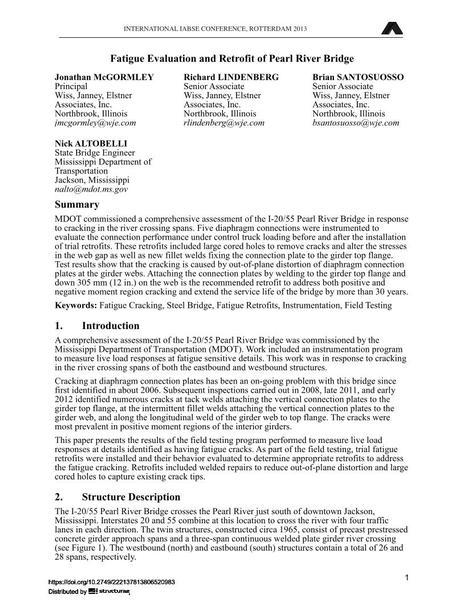Fatigue Evaluation and Retrofit of Pearl River Bridge

|
|
|||||||||||
Détails bibliographiques
| Auteur(s): |
Jonathan McGormley
Richard Lindenberg Brian Santosuosso Nick Altobelli |
||||
|---|---|---|---|---|---|
| Médium: | papier de conférence | ||||
| Langue(s): | anglais | ||||
| Conférence: | IABSE Conference: Assessment, Upgrading and Refurbishment of Infrastructures, Rotterdam, The Netherlands, 6-8 May 2013 | ||||
| Publié dans: | IABSE Conference, Rotterdam, May 2013 | ||||
|
|||||
| Page(s): | 452-453 | ||||
| Nombre total de pages (du PDF): | 8 | ||||
| Année: | 2013 | ||||
| DOI: | 10.2749/222137813806520983 | ||||
| Abstrait: |
MDOT commissioned a comprehensive assessment of the I-20/55 Pearl River Bridge in response to cracking in the river crossing spans. Five diaphragm connections were instrumented to evaluate the connection performance under control truck loading before and after the installation of trial retrofits. These retrofits included large cored holes to remove cracks and alter the stresses in the web gap as well as new fillet welds fixing the connection plate to the girder top flange. Test results show that the cracking is caused by out-of-plane distortion of diaphragm connection plates at the girder webs. Attaching the connection plates by welding to the girder top flange and down 305 mm (12 in.) on the web is the recommended retrofit to address both positive and negative moment region cracking and extend the service life of the bridge by more than 30 years. |
||||
| Mots-clé: |
pont en acier
|
||||
